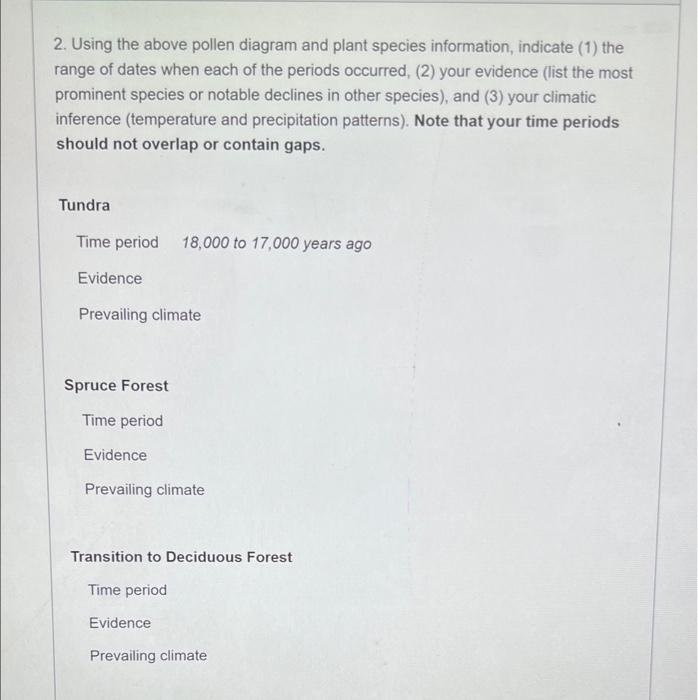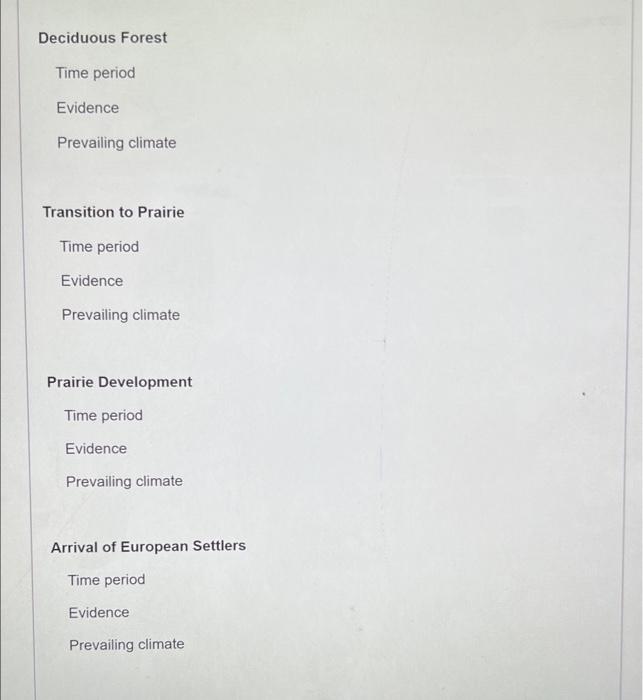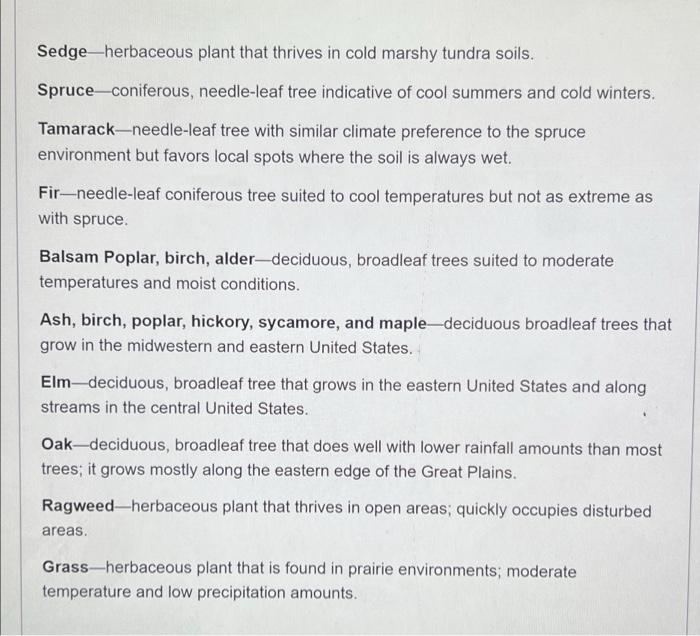Answered step by step
Verified Expert Solution
Question
1 Approved Answer
2. Using the above pollen diagram and plant species information, indicate (1) the range of dates when each of the periods occurred, (2) your




2. Using the above pollen diagram and plant species information, indicate (1) the range of dates when each of the periods occurred, (2) your evidence (list the most prominent species or notable declines in other species), and (3) your climatic inference (temperature and precipitation patterns). Note that your time periods should not overlap or contain gaps. Tundra Time period 18,000 to 17,000 years ago Evidence Prevailing climate Spruce Forest Time period Evidence Prevailing climate Transition to Deciduous Forest Time period Evidence Prevailing climate Deciduous Forest Time period Evidence Prevailing climate Transition to Prairie Time period Evidence Prevailing climate Prairie Development Time period Evidence Prevailing climate Arrival of European Settlers Time period Evidence Prevailing climate Years 1000 2000- 3000 4000- 5000- 6000 7000 8000 9000 10000 11000- 12000 13000 14000- 15000 16000 17000 18000 Sedge Spruce Tamarack scher Fir Birch Black Ash Alder Balsam Poplar Elm Percent Source: Eric Grimm, Illinois State Museum. Pollen diagram created from data obtained from a core extracted at Nelson Lake, Illinois. Ironwood Oak Sycamore Hickory Ragweed Grass Maple 20 40 Sedge-herbaceous plant that thrives in cold marshy tundra soils. Spruce coniferous, needle-leaf tree indicative of cool summers and cold winters. Tamarack-needle-leaf tree with similar climate preference to the spruce environment but favors local spots where the soil is always wet. Fir-needle-leaf coniferous tree suited to cool temperatures but not as extreme as with spruce. Balsam Poplar, birch, alder-deciduous, broadleaf trees suited to moderate temperatures and moist conditions. Ash, birch, poplar, hickory, sycamore, and maple-deciduous broadleaf trees that grow in the midwestern and eastern United States.. Elm-deciduous, broadleaf tree that grows in the eastern United States and along streams in the central United States. Oak-deciduous, broadleaf tree that does well with lower rainfall amounts than most trees; it grows mostly along the eastern edge of the Great Plains. Ragweed-herbaceous plant that thrives in open areas; quickly occupies disturbed areas. Grass-herbaceous plant that is found in prairie environments; moderate temperature and low precipitation amounts.
Step by Step Solution
There are 3 Steps involved in it
Step: 1

Get Instant Access to Expert-Tailored Solutions
See step-by-step solutions with expert insights and AI powered tools for academic success
Step: 2

Step: 3

Ace Your Homework with AI
Get the answers you need in no time with our AI-driven, step-by-step assistance
Get Started


